Are you a jewelry designer? Are you a hobbyist that just has an overabundance of finished jewelry on hand? The holidays are here. Now is a great time to sell your finished necklaces and bracelets. Current events have turned people into online buyers. It is a great time to get your foot in the door. Today, we have some handy tips for you. We will share some advice on how to take pictures of your jewelry. We will give you some hints on how to price your jewelry. And we will discuss how to sell jewelry in a COVID world. Make some money on your investment. Sell your jewelry locally or online. Take control of your inventory and make some extra Christmas cash!
Are you looking for some hints on how to take pictures of your jewelry? Do you need some number crunching tips on how to price your jewelry? Your handmade crafts have value. Make sure your are getting the highest dollar for your time. It costs money to make jewelry. It costs time and talent to design a necklace. Make sure you are not undercutting yourself. Make jewelry design a business. If you need a to supplement your income or even if you just need some extra closet space, we will look at ways to make your jewelry make money for you.
Photograph, Price, And Sell Your Handmade Jewelry
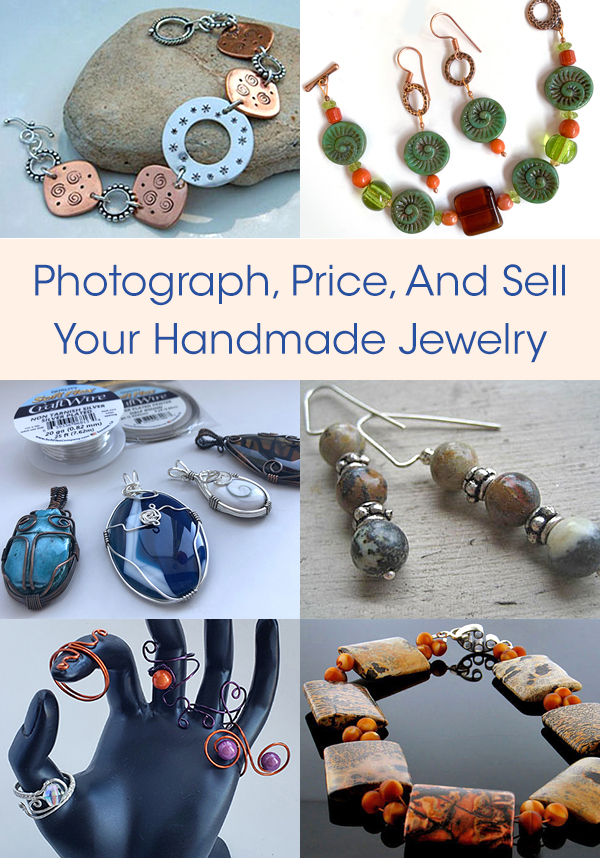
Photos Are The Best Way To Make Sure Your Jewelry Sells
Nobody is going to want to buy washed out jewelry and hum drum color. Make sure you are taking the best pictures possible. Don't worry, you do not need a world class camera to take world class photos. Your phone is going to surprise you, as long as you consider some basic photography tips. You do not need a professional photography studio background. There are ways to make your pictures work at home. A DIY phone stand can be useful for supporting your camera and maintaining the height and distance during each shoot. A homemade light box can help you evolve into a better photographer.
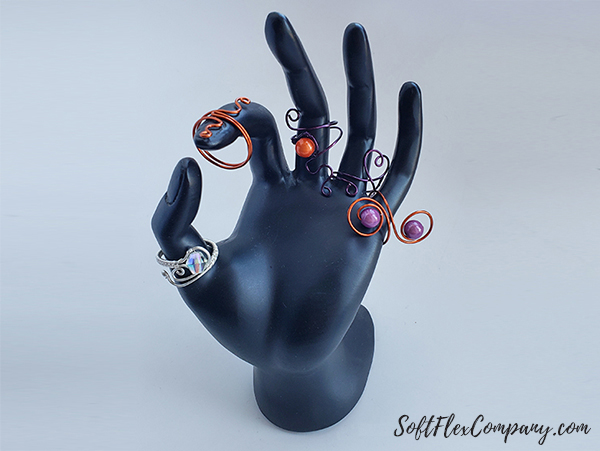
Consistency Is Key
If you are selling your jewelry or gemstones online, inconsistent pictures can look uneven and visually unappealing, as a whole. Keep your themes consistent and everything will look much more professional. Whether you are looking to sell in a niche market or design classic pieces, make sure your photographed images have a consistent tone and style.
Consider your composition. Do you want to place your designs on props or leave a blank background? Is there an angle that makes your jewelry stand out? Now, follow this pattern. It might take some practice, but once you get an idea of how to maintain a unifying theme throughout your images, it will be easy to conform to it. If you work with a wide assortment of color, consider sorting your images by color so they are grouped and pleasant.
You can get an idea of what works and what does not by visiting social media sites like Instagram or Pinterest. The stand out posters there often use a consistent theme to display their work. Use popular images as a guideline for your work - those photographers are on top of their game for a reason!
Presentation For Dynamic Images
Consider how to compose your image. Do you want to shoot your jewelry straight on? Do you want to angle the necklace in the image so it does not look static? Play with your photos. Take pictures that show exciting jewelry pieces. Is there a side of your necklace that demands attention? This will take some practice. Try different angles and see which one sells your jewelry best. And stay consistent. Don't take wildly different images for each piece. Pick an angle that gives your designs depth and is a great showcase.

Model Your Jewelry
Sometimes your customers will want an organic look at your jewelry. Consider using hand models for images. Seeing the jewelry on a human hand can show how the finished product will look when a customer is wearing it. You can also shoot your necklaces in natural environments. Model your jewelry on a friend in a common situation. How will this necklace look at the coffee shop? Take a photo that represents when an onlooker will see. Modeling on human subjects will be a little more involved than shooting against a backdrop, so it is likely something to consider down the road. But keep it in mind. Everybody wants to have the best representation of the products they are buying and seeing it demonstrated is a great way to build customer confidence in your jewelry.

Great Photos Need Great Lighting
Make sure you are capturing your subjects in the best light. Even the most wonderfully designed necklaces can look washed out and boring if lighting is not considered. A well lit design will be luminous and awesome. You do not want to take a picture of, say, Dichroic Glass in less than optimal lighting. Dichro explodes with color under the ideal light. Don't sell your goods short with muted tones and shadows.
Natural light is the easiest and cheapest source of light for your photos. Mother Nature does a wonderful job of making everything look amazing. The sun is a perfect source of illumination. If the sunlight is too severe, you can find a shaded area that restricts some of the direct light, but still retains the clarity of natural light. You can take your photos inside or outside. Choose your makeshift studio area and experiment. Sunlight will look different throughout the day. Images shot at noon will look vastly different than images shot during the 'golden hour'. You will need to figure out when the best time is to work with natural light. If you find the sun is overwhelming your images you can pick a window where the light is a little more regulated. You can also consider a reflector to control the lighting on your subject.
Artificial light is great for designers that do not have the time or opportunity to work with the sunlight. You can purchase or build a light box that will make your images pop. Light boxes are great for visual clarity. They diffuse the light and can create a near shadow free presentation. Your jewelry will be vivid and vibrant. Best of all, you can work with a solid white background and quit over thinking your backdrop. If you work with a white backdrop, it will also be easy to stay consistent.
Edit Edit Edit
Don't be afraid to cut, snip, and texture your images. If your jewelry looks dwarfed by a lot of negative space, cut the fat and bring the image closer. You can find a lot of software online that is easy to use and great for beginner photographers. You can also find photography editing apps on the phone. If you find that you are having a hard time comprehending how to use the software, check out YouTube. There are often video instructions that will make it clear.

Taking Pictures Of Your Jewelry

By Charlene Gary
Blog:
www.graygirlstudioarts.wordpress.com
Instagram:
manola_gray
We all want to take high quality pictures of our jewelry. You’ve worked very hard at your craft; you want to highlight the best features, and the best selling points. So how do you get the best quality photo without spending thousands of dollars? I’m not a professional photographer, but I have some ideas.
Good Jewelry Photography Needs Sharp, Crisp Focus
You want to buy a high quality camera with as many pixels as you can. The word Pixel comes from a combination of the word Picture (pix) + element, which is used to describe the most basic unit of an image displayed on a computer or TV or on a printer. The greater the number of pixels per inch, the greater the resolution. Most digital cameras today come with a macro setting. Learn to use it; it will be your best friend. This will allow you to shoot when the distance from the lens (at maximum wide angle) to the subject is within 3-10cm, or 1.2 – 3.9 in. I bought a Canon PowerShot SD 630 digital elph which has 6.0 mega pixels 2 years ago. Most cameras today come with a memory card, but I take a lot of pictures, so I bought an extra memory card with 64mb of storage. I realize I need to update my camera, but I find it still takes great pictures. All the photos on my blog were taken with this camera. It’s lightweight and easy to carry around in my purse. The ability to use the macro setting for my jewelry is very important. Since I can get so close to the piece, it gives a beautiful, detailed representation of the actual product. Potential buyers, and curiosity seekers alike, want a clear, detailed photo of the piece.
Another Key To Good Jewelry Photography Is The Lighting
I prefer natural light myself. Luckily, I live in a state where we have lots of light, so I’ve been very fortunate to be able to go outside, find a nice backdrop, and take some great pictures. On days when it’s not so bright out, you’ll need a small inside studio setup. A small light tent makes it easy to reduce glare and control shadows for jewelry photography. A clear plastic lidded container, such as one you might store clothes in up in your attic, is an option. Set the container on its side, add some diffused light, and see what happens. You can also use a cardboard box. Cut out white, or black, paper, glue it to the inside of the box, set up your light lamps and take some test shots. Try using a white sheet folded over on a table and the diffused light. Be careful not to shadow your piece, or have your shadow show up on film. It’s nice that with digital cameras I can shoot and reshoot and not worry about wasting film. I get an instant view of what my photo will look like. I can take as many as I need until I get it right. The camera’s eye can be very discerning, so make sure that there isn’t a smudge on your lens, or dust or dirt in the background as that will show up in your photo. Sure, with digital it’s easy to take another photo, but why waste time when you can have it perfect with the first shot?
Of course, you can always purchase a light box and lighting instead of making your own. These give you a high quality, professional photo of your jewelry, and you can do this in your home at your convenience. A search for photo light box online yielded dozens of results.
With a little ingenuity, craftiness and patience, you can take some beautiful photos of your jewelry. Whatever your budget, there is something out there for you.
2 Pricing Solutions: Cost Times Three And Intrinsic Value
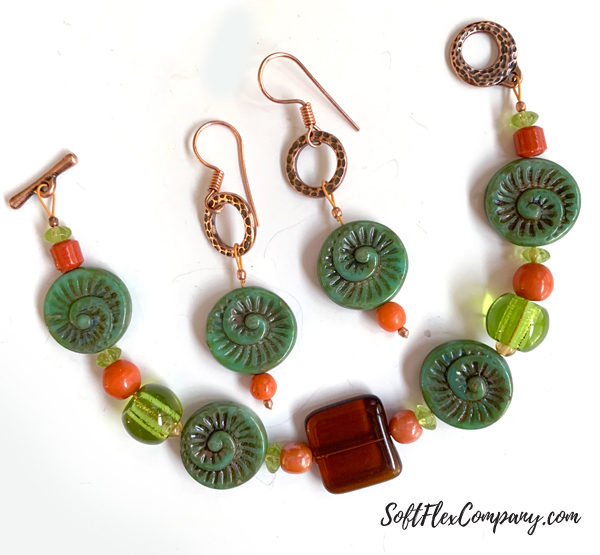
By Cathy Stevens
My mother and I had a jewelry craft store for over 40 years combined and we did shows and sales as well. We developed 2 successful formulas. First is cost factor, times 3. In retail, keep in mind that a business cost factor is wholesale. I purchased materials at 30-50% below retail. If you're buying your materials retail already, your prices will be slightly higher but still work with your cost base. Use cost times 3. 1/3rd of your asking price will be to recover the cost of your materials to keep making and staying in business. 1/3rd is to cover and contribute to your overhead and advertising/marketing expenses. Last third is your profit. Your reward for making the item. When it comes to art, you can forget hourly wages. There will always be someone who values their time differently so an hourly wage is too random to use as a consistent formula.
The second formula is intrinsic value. This is where artists find rewards the greatest. Everyone's got different preferences for art and craft items. They'll pay what it's worth to them. You can't just arbitrarily say, people routinely pay x dollars for an item and expect a fast sell. You have to find the right buyer and sometimes you'll sit on a piece forever, so use your own intrinsic value. If you like your piece well enough to keep it forever, price it for what it's worth that you will part with it. That's where you'll get your higher prices. When you're proud of your work, others will value it more.
When people ask me why I'm asking a particular price, I tell them exactly. I found that at shows, I would always have the best prices compared to amateurs just testing the waters of sales by using my cost times 3 formula. I could easily justify random pricing because some materials (gemstones) were more expensive than others. And when it came to my 'special' pieces, I'd say, "Oh this is my favorite piece!" I'd even wear my favorites. I'd say, "This (price) is what will make me willing to part with it." And then I'd find the buyer who agreed with me and not be offended or concerned if it didn't sell. Not everyone shares my tastes in jewelry.
How To Price Your Handmade Jewelry
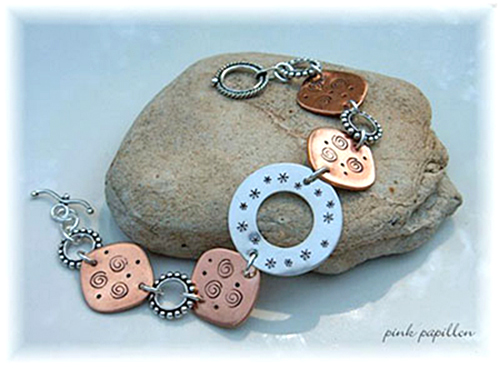
By Mary Ann Springer
Website:
www.pinkpapillon.com
Email:
maryann@pinkpapillon.com
I remember it well~~ the sale of my first piece of jewelry. I had decided to give a popular auction site a try to see what would happen. It was a safe and (sort of) anonymous way to see if could actually sell my work. I listed. It waited. Then it happened. I had bids! I excitedly waited out the rest of the auction. I had a sale!
I was so excited as I finally felt as if I were a "real designer". People out there liked my work as much as I did and actually decided to purchase it! I was over the moon. Of course, I had to relay the exciting news to my husband, who immediately wanted to know how much I made on the piece. When I told him the selling price, he said, "No, I mean how much did you actually make?" Well. I really didn't know. I hadn't really thought about that. I started the auction low as I thought that was what you were supposed to do. And to tell you the truth, I never really thought about calculating out the cost of creating the piece before I set a starting bid. I was an artist, not a business person. So, you can imagine my surprise when I found out I made approximately two dollars on my first sale. While that fact really didn't diminish my happiness over the sale, it did get me to start thinking about the whole subject of pricing jewelry to sell. When I started to get serious about my business, I knew it was time to do some research.
Through reading and speaking to many different people in the business of selling jewelry as well as some other types of businesses, I settled on a pricing plan that works for me. Along the way I learned about three important things that should be considered when pricing that never really occurred to me in the beginning of my business venture. Now that I think about them they are nothing earth shattering and parts really are common sense, but I figure if I didn't know, there may be someone else out there that doesn't know, either. And this is for you. Please note that I am certainly no expert on the subject, and there are many different ways to price your pieces. I am just going to give you three things to think about.
You Want To, At Least, Make The Cost Of Your Piece
You would think this would be a given, but I made this mistake myself in the beginning. I also can't tell you how many times I have visited a website or an auction and said to myself, "That price isn't even CLOSE to how much it cost this person to make it!!" As a designer myself, I can pretty much rattle off the current price of any finding sold by one of my vendors, as well as the price of silver that day, so sometimes this makes me wonder if they have some fabulous low cost vendor that I don't know about. I really don't think so. This bothers me. Why are they giving their pieces away? Is it to get their name out there? Is it to undersell the competition? Are they just unaware, as I was in the beginning? I can't be sure. But I do not think that it's a good idea. The reality is you are not going to stay in business very long by underselling yourself. Eventually, you are going to have to raise your prices. I feel it's better to start out consistent. While the goal is to eventually make a profit on the piece, you really don't want to lose money on it, especially if this is a new business. The bottom line is you should calculate the cost of every single piece you make to sell. All of those tiny little findings can add up, especially with the price of precious metal these days! Time consuming yes, but very necessary. There are even computer programs that can help you calculate cost. You enter in an inventory of your findings and beads, as well as how much each costs. It then allows you to enter in a "recipe" for a piece and it automatically calculates the cost of creation. Cool! This cost should be your starting point for calculating the selling cost of the piece.
Don't Work For Free!
You would expect to be paid at any other job that you took, so why do we forget to pay ourselves for our jewelry making business? Most likely because of the fact it is something we love to do and would be doing it anyway, even if we weren't trying to turn it into a business. But the reality is, this is your job and you need to be paid for your time and effort. You have the choice of paying yourself an hourly wage or per piece. You need to decide which will work best for you. Do you create pieces quickly, or do you like to make intricate pieces that require hours to complete? The choice is up to you. You don't even need to use the same method every time. You can use the one that best fits the situation. For example, if you are creating the same pair of earrings multiple times, it may be wise to pay yourself by the piece as this work tends to move quickly. If you are working on a custom piece, an hourly wage might be more suitable.
I think the hardest part is deciding how much to pay yourself. To help me, I decided to think of it as any other part time job. How much would I expect to make an hour if I took a position somewhere outside the home? $10 an hour? $12? $15? Once you decide it was very easy to calculate your labor costs whether it's per piece, per hour, or even per minute.
Time is important, too. In the beginning I suggest really keeping track of the minutes you work by writing down the time you start a piece and the time you actually finish it. You may be surprised! I know I sometimes really underestimate the time it takes me to create something. I get all into the creation, restringing and restringing and the next thing I know, 2 hours have flown by and I am still working! It works the other way for me, too. Sometimes the ideas just flow out of me and I create piece after piece in no time. (This usually happens when I am under pressure....like when I have procrastinated on craft show inventory and it is fast approaching!)
The best part is you are your own boss and can adjust your wages whenever you like!
All That Other Stuff You Need To Run Your Business Counts
Everything outside of your labor costs and the actual cost of your piece is called "overhead". At first glance this category may not seem to be that big of a deal, why add this cost to the piece of jewelry? How much can it be? When I started to actually write down all of those "things" that I needed to run my business, I was surprised at how long the list became!
Some things are easy to think of when you consider overhead~~ we know the cost of tools should be counted, as well as the cost of packaging, or the cost of padded envelopes for mailing pieces to customers, your business cards, etc. But what about electricity? The phone bill? Travel and gas fees? If you work out of your home as most of us do, you can argue that you would be using the electricity and the phone anyway, so why count it? But what if you weren't in your home? What if you rented out studio space and were paying for those things out of your business money? Just because your home is your office doesn't mean you shouldn't count these things as overhead. To be completely honest, this is the category that never even occurred to me when I began pricing my pieces. I think many artists overlook this category. For one, it seems to be an almost impossible to figure out.
So, the big question is, how do you calculate overhead in order to add it to the cost of your piece? Do you really have to add up all your extra expenses and somehow divide it out for each piece? I thought there had to be an easier way. When I first started out and was researching this topic, I read that your overhead costs are about 20 to 30 percent of your piece cost and your labor cost combined. Let's use 20% as an example. Your base cost on a pair of earrings is $4.00 and you pay yourself $15 an hour. These earrings took you 5 minutes to make, so your labor wage would be $1.25. You then add those two numbers together and take 20% of it to get your overhead cost. Finally, you add all three numbers together. For all those interested in the math, here it is:
(PC) $4.00 + (LW) $1.25 = $5.25 x .20 = $1.05 + (PCLW) $5.25 = $6.30
Here's where it gets tricky. I know some people that consider this price the "wholesale" price. (The price you would give to a retail company that wanted to sell your piece in their store. They in turn would mark that price up times 2 or 3). I know some other people that agree with the above formula but say you now need to multiply that $6.30 by 2 making it $12.60, and that is the wholesale price. This is actually what my jewelry software does, and what I tend to do myself. If were to sell this piece myself as retail, I would take that $6.30 base cost and multiple it by 3 or 4, getting my own retail price.
In the beginning this is going to sound extremely tedious and time consuming. It definitely gets easier and you will become very good at "guessimating" the cost of a piece!
So, Is That It?
Unfortunately, no. This has all been very cut and dry, but jewelry pricing isn't really cut and dry at all. There are many outside factors and influences to think about. For example, the area in which you live. It may be easier to sell jewelry in a place that is well populated than a place that is not. The venue you sell in is another factor. What is the cliental like? A little research into your area and cliental will help you price your jewelry at a fair price that will sell for you.
I think the bottom line is to not sell yourself short! You may be an artist, but in order to succeed you have to become a business person, too. If you have realistically calculated your costs and come up with what you believe is a fair price, then by all means believe in yourself and your creations and go for it! By assessing and reevaluating your pricing situation as you go, you will be well on the road to having a successful and profitable jewelry business
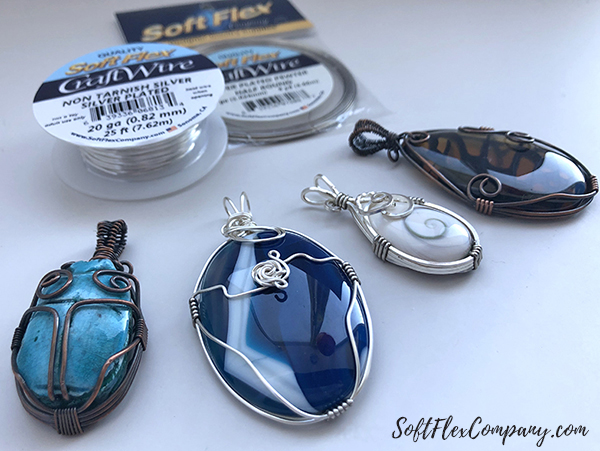
Where And How To Sell Your Jewelry. What Venue Is Right For You?
Making jewelry is a fun and rewarding craft. But, wouldn't it be great to profit from your talents? Wouldn't it be nice to recover some of the costs you have put into your jewelry making supplies? If you make a lot of jewelry, you should consider selling your wares. There are lots of ways to go about doing so. First, you need to plan out your strategy. How much time and effort are you willing to commit to selling your jewelry? Are you interested in selling from home or are you willing to travel? Who is your target market? Figure out who you want to sell your goodies to and draw up a road map.
Work From Home
The world has undergone some drastic changes. Everything we thought we understood has seemed to flip flop. Going to the mall or sitting in a theater almost sounds like a terrifying proposition now. Thankfully, selling jewelry online is one way to return your investment without even having to leave the house. Jewelry is an incredibly diverse market. There is lots of potential, you just need to be willing to work hard and hope for a little luck. Just make sure you have a computer that can handle the workload. You are going to need to have storage for photos. You are going to want find software that assists with writing descriptions and information. You probably want to consider software that creates spreadsheets so you can view your inventory at a glance or upload it.
One of the largest websites for selling handmade crafts is Etsy. Etsy allows you to set up your shop how you see fit. You create the rules and pricing for your jewelry. You set the options for shipping, handling, and returns. Just know, this is a job. Even if you are just supplementing your income, you will need to be actively involved in the daily maintenance of your store. Make sure you monitor sales and update photos as needed. If you disregard your store, you will lose clients. You need to be present.

Etsy is the most established and popular venue for selling handmade jewelry, but you have options. Ruby Lane is a great choice if your work is gallery quality. The focus at Ruby Lane is vintage. If your work is high end and timelessly nostalgic, you are going to fit in nicely. eBay is an option. eBay is second only to Amazon in the scope of online retail. There is a handmade artisan section of eBay that is a good fit. Just make sure you are ready to wheel and deal. Sales move merchandise on eBay. If you do not want to compromise on pricing, you may not find your inventory moving. Bonanza is a good place to sell. They are incredibly reasonable with the commission they take from each item you sell. Amazon Handmade is a newer option. Amazon is, obviously, a trustworthy place to sell your crafts. Just make sure you are willing to do the work. If you let your sold items sit idle, you are going to look bad.
If online retail is a little too much micro managing for your taste, consider looking for communities and Facebook groups. If you are part of an active community, like our Soft Flex VIB Facebook group, you are able to network and put your name out there. Posting pictures of your jewelry will entice potential customers into contacting you. Like professional jewelry sites, just know that you do need to be present. You need to take pleasant pictures of your work and make friends. You need to be liberal with your compliments when you enjoy the jewelry others have posted. You need to be a solid member of the community. It is a lot of fun spending time appreciating jewelry and making friends. If you want to be social and actively promoting yourself, this is a great to put your work on display.
If you are really motivated and do not want to be constrained by the rules and regulations of sites like Etsy, you can launch your own website. This is a lot of work. You need to know that going in. First, you will need to purchase your domain name (softflexcompany.com - etc.). You will then need to find a host (Go Daddy is one option). You then need to code your site. You will need to learn how to use HTML or find software that enables you to code. You will also need images. If you are not a photographer, consider hiring one. A graphic designer will also be supremely beneficial if you want to make sure your site is professional. Running your own site may not be the best bet if this is just a supplemental income.
Traveling And Seeing The World
If you love to travel, selling jewelry is one way to get to see the world and make money. This is only an option if you are ready to commit yourself full time to selling jewelry. You are going to need lots of inventory. You are going to want to invest in point of sale software if you want to keep the books straight and sell quickly. Hand written receipts are slow and can lack critical information. You are going to need lights and items to make your selling space pleasant and presentable. You are going to need to staff your booth if you are unable to stand for long periods of time or cannot lift heavy items. Traveling is a full time commitment. You will need to have the money to purchase a booth at a trade show. You will need to find a hotel or be willing to share a room with others. You will need to purchase airline tickets and possibly a rental car. Working the trade show circuit is a lot of fun, but it is a massive amount of work.
Trade shows are in limbo at the moment. COVID-19 is keeping people away from public events and gatherings. If this is something you want to pursue, now is a good time to focus on building your inventory. Many shows are canceled until next year. Many shows are waiting for a sliver of normalcy before returning. Since the future is a little unknown at the moment, it is a good time to focus on your craft and not worry about the business end.
Selling at trade shows is a risky proposition. Some shows bring in sales for specific items. You might find that everybody is buying Czech Glass and Moukite at a show where you have only brought in Turquoise and Lapis. You need a diverse booth that appeals to a wide audience. If you are at a show and not moving merchandise, it can be very difficult to justify another show. If you are low on funds, it might even be impossible to move forward.
Trade shows are phenomenal when they work. When you have an active booth at a show that is bringing in lots of new faces and transactions, you are networking and building a foundation. People love to meet their favorite artists. People love to touch and hold and feel jewelry and beads. People that appreciate jewelry love to connect with the art and artists. If you undertake the task of running a booth at a show, make sure you focus on follow up. If you meet lots of new people and make friends, you need to retain them after the show. Let your clients know that they can buy from you anytime. Retention is an absolute must if you intend to be successful.
Sell Locally
If you are not willing to travel, look out for local galleries. If you are designing at a gallery level, you can reach lots of varied customers. Galleries will show your inventory for you. They will make sure your jewelry is safe and well kept. Some galleries will buy your jewelry from you and then sell it. Others will sell your work and take a commission. If they are receiving a commission, you might not get paid in regular intervals. You will get paid as your work sells. Galleries are great for secondary incomes. Just make sure you have money coming in from other sources. If your work does not sell for a particular gallery, you are going to be responsible in picking your items up.
Your local bead store is also a great resource. Don't be afraid to chat and make friends. You might learn something new. You might find a place to sell on consignment, locally. You might even make a friend that wants to partner up and make some money. It never hurts to network. The more people in your circle, the better. Everybody benefits when they have resources.
Learn From Business Owners
Make sure you visit our Beading Party blogs. We discuss the industry with designers and business owners. If you would like to learn more about how to sell your finished jewelry or beading supplies, you will definitely learn a trick or two. We discuss everything from jewelry making to trade shows, travel, and filming segments on television. This is a great place to see how others have followed their dreams.

If you have friends that sell jewelry, pick their brain. See what works for them. They can tell you what trends you should be following. What colors are selling well. And you might even consider doing something topical - face mask lanyards are a fashionable way to strut your stuff during this time of social distance and quarantine. If you do not have a jewelry designer in your circle, visit forums and social media. You are sure to find some sage advice.
Business owners can give you specific tips will need to consider:
How will you handle customer returns?
Are you planning to refund customers?
What is your plan for a jewelry piece that breaks while a customer is wearing it?
Have you considered contingency plans for unforeseen issues?
Minimize Risk
Change seems to be the only constant in the world right now. If you plan to make a career out of jewelry sales and design, make sure you start as a supplemental income. The jewelry making industry has had peaks and valleys over the last two decades. There was a time when bead and gemstone sales could turn a city into a thriving bead show - Tucson, for example, would seemingly double it's population in January and February as people from all over the world came to sell their wares. There is so much uncertainty right now. We do not know if we will be in quarantine a year or two from now. We do not know if we will ever, comfortably, walk amongst strangers without a mask. 2020 has flip-flopped so many things.
Many industries have had curious upturns with people staying home and doing the majority of their shopping from the comfort of their living room. Lots of people have been spending money on arts and crafts and hobby items. Creating is good for the soul. It is a way to think beyond the darkness and wish for a hopeful and prosperous future. If you start with baby steps and see how things progress, it will be easy to gauge how you might make more money. If you start small and nothing seems to pay off, you can cut your losses and keep your main income. Taking chances is probably not a good proposition right now.
Good luck. Christmas ornaments are always a big seller. Festive jewelry is a great way to see if people are interested in your jewelry interpretations. Give it a shot. You never know, you could find a career in jewelry!
Join our Facebook group – VIB. Stay in the know. Stay up to date. From our bead shows to our video shows and sales, you can stay in touch with us. The community is full of artistic and helpful beaders and crafty people. Inspire and be inspired. Share your pictures and get the beading bug from others!
Visit the Soft Flex Company YouTube Channel!

Blog contributor Thomas Soles loves Jazz Age writers and crunchy french fries. His favorite gemstones are Lapis and Pietersite. His favorite hobby is day dreaming. And his favorite mustache is Freddie Mercury's. As you can see, he has a healthy (or possibly unhealthy) sense of humor. You can write to him at Thomas@SoftFlexCompany.com



